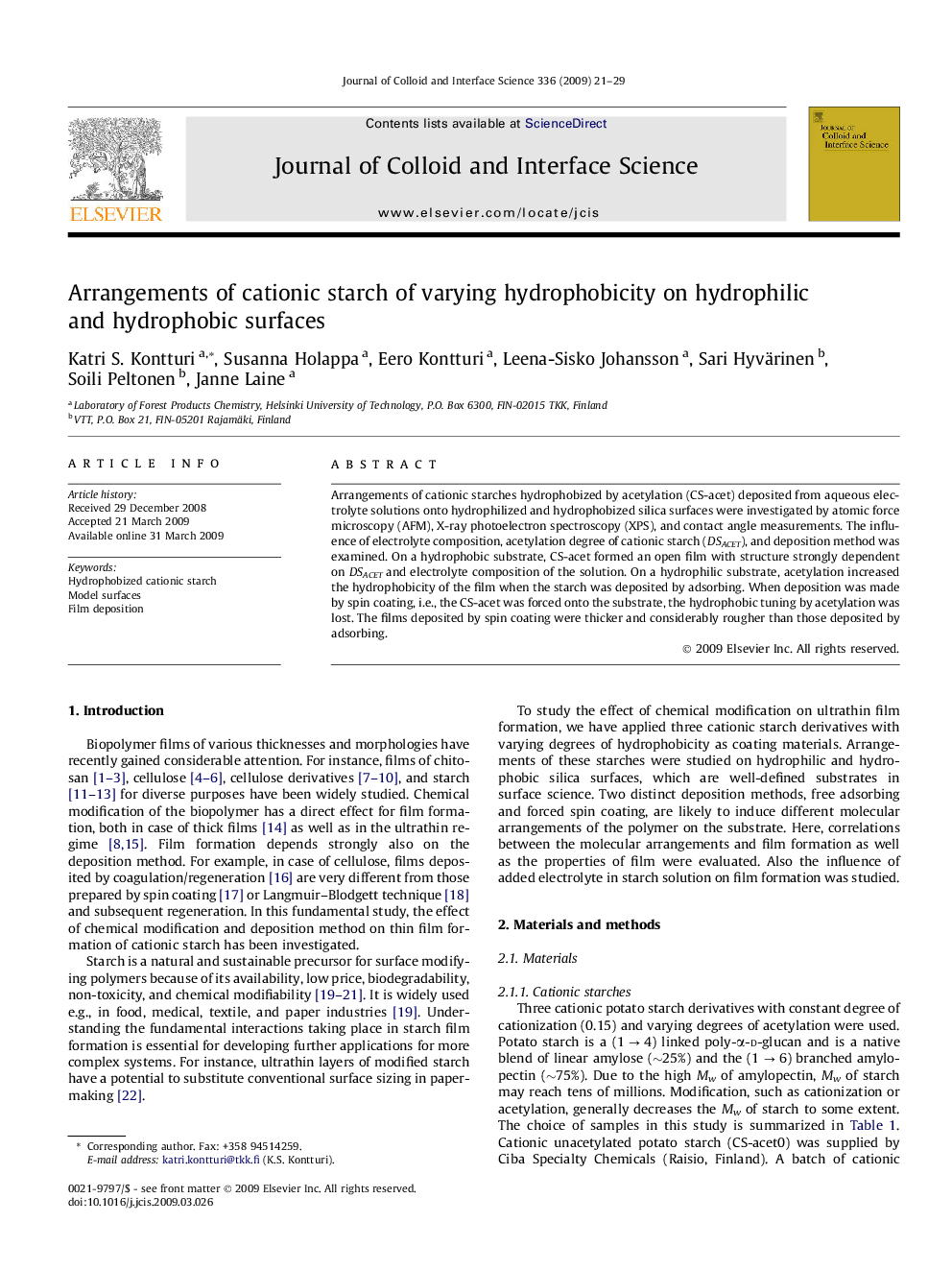| Article ID | Journal | Published Year | Pages | File Type |
|---|---|---|---|---|
| 610334 | Journal of Colloid and Interface Science | 2009 | 9 Pages |
Arrangements of cationic starches hydrophobized by acetylation (CS-acet) deposited from aqueous electrolyte solutions onto hydrophilized and hydrophobized silica surfaces were investigated by atomic force microscopy (AFM), X-ray photoelectron spectroscopy (XPS), and contact angle measurements. The influence of electrolyte composition, acetylation degree of cationic starch (DSACET), and deposition method was examined. On a hydrophobic substrate, CS-acet formed an open film with structure strongly dependent on DSACET and electrolyte composition of the solution. On a hydrophilic substrate, acetylation increased the hydrophobicity of the film when the starch was deposited by adsorbing. When deposition was made by spin coating, i.e., the CS-acet was forced onto the substrate, the hydrophobic tuning by acetylation was lost. The films deposited by spin coating were thicker and considerably rougher than those deposited by adsorbing.
Graphical abstractFigure optionsDownload full-size imageDownload as PowerPoint slide
